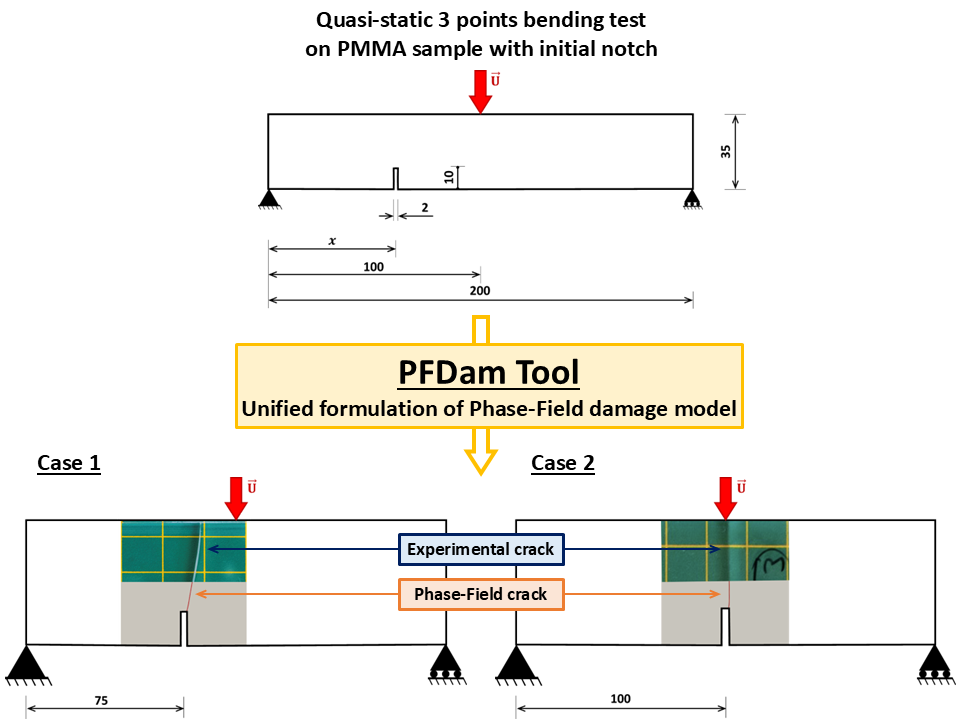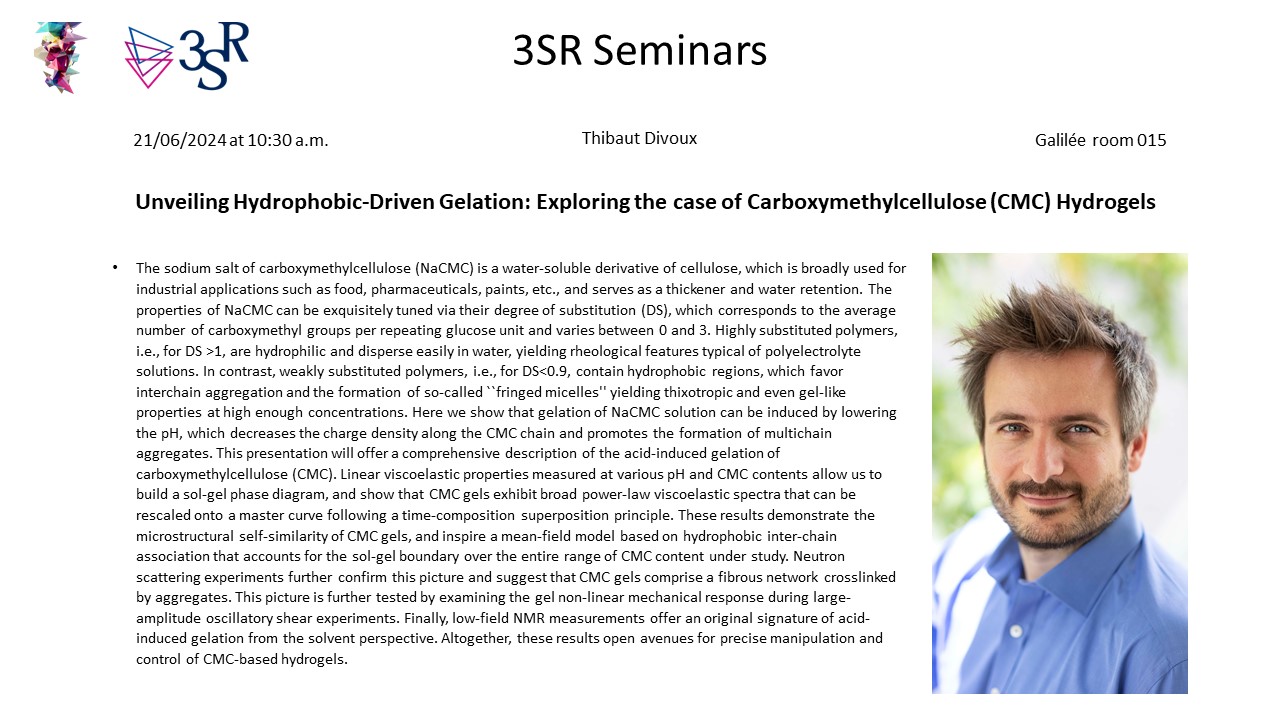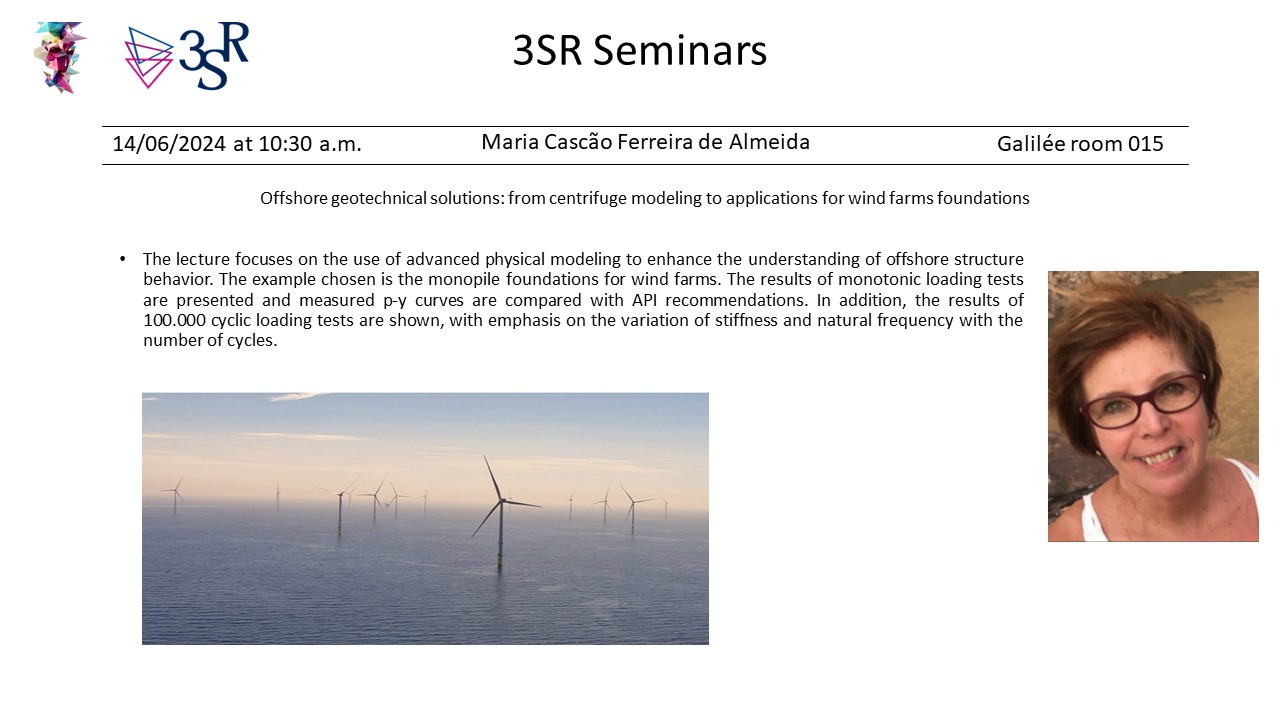Willy Bonneuil
10:30 am
Saint-Martin-d'Hères - Domaine universitaire
Bâtiment Galilée 003
Cells growing in soft confined environments: from spheroids to soil bacteria
Spheroids are a blooming experimental model of human tissues that allows real-time
observation of cells in three dimensions and under physiologically relevant mechanical
stimuli. Mechanically, they are soft porous spheres of low permeability. They most often
protrude from a substrate to which they are attached—the floor of cell culture chambers. I
show in a theoretical and numerical study how this partial confinement, fluid flow in the
culture chamber, and tissue deformation combine to limit, or promote, spheroid growth.
Bacteria are known to be beneficial to the structure and function of soil, in that their action
increases porosity and pore connectivity. I investigate through microfluidics experiments
the role of micromechanical interactions between growing bacterial microcolonies and a
granular medium whose particles are mobile. Those experiments show that growthinduced
pressure in colonies that are adjacent to grains deforms "soft" grain chains. I
propose that the viscous relaxation of those growth stresses can induce a "granular
respiration" where grain chains are compressed before relaxing into a new mechanical
equilibrium after bacterial growth has ended.














